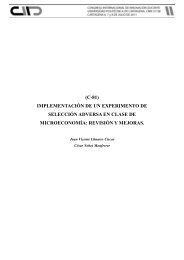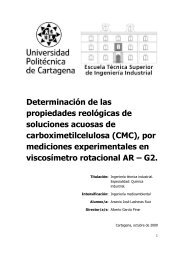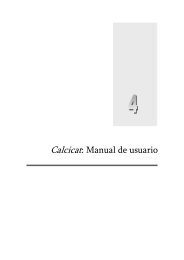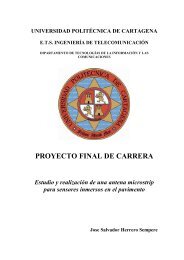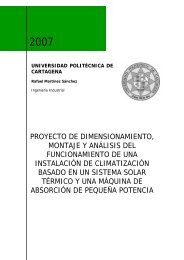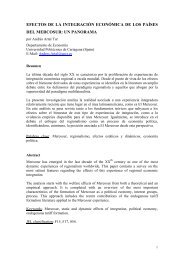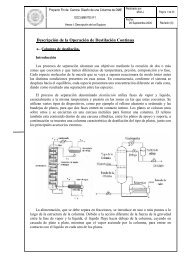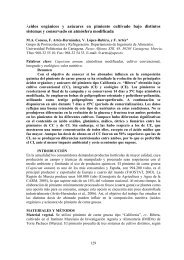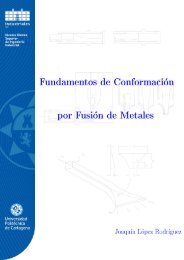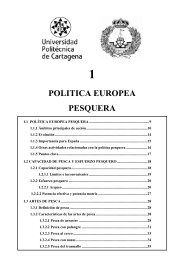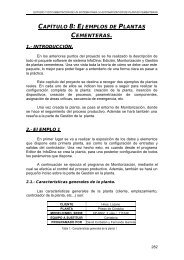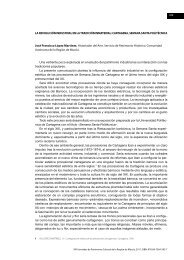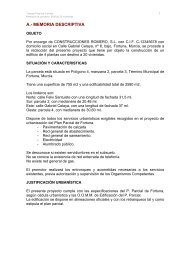Predistorted Ku-band rectangular waveguide input filter
Predistorted Ku-band rectangular waveguide input filter
Predistorted Ku-band rectangular waveguide input filter
Create successful ePaper yourself
Turn your PDF publications into a flip-book with our unique Google optimized e-Paper software.
Reflection zeros<br />
non-predistorted<br />
<strong>filter</strong> (f k )<br />
Reflection zeros<br />
predistorted<br />
<strong>filter</strong> (f kr )<br />
RX/TX poles<br />
non-predistorted<br />
<strong>filter</strong> (e k )<br />
RX/TX poles<br />
predistorted<br />
<strong>filter</strong> (e kr )<br />
+0.9684j -0.2210 - 0.2796j -0.1261 + 1.0923j -0.1216 + 1.0923j<br />
-0.9684j 0.1414 - 0.7489j -0.1261 - 1.0923j -0.1216 - 1.0923j<br />
+0.7206j -0.1414 + 0.7489j -0.3717 + 0.8287j -0.3662 + 0.8287j<br />
-0.7206j 0.2210 + 0.2796j -0.3717 - 0.8287j -0.3662 - 0.8287j<br />
+0.2680j -0.9856j -0.5433 + 0.3134j -0.5359 + 0.3134j<br />
-0.2680j +0.9856j -0.5433 - 0.3134j -0.5359 - 0.3134j<br />
TABLE I<br />
ZEROS AND POLES OF THE NON-PREDISTORTED AND PREDISTORTED FILTERS.<br />
S 1 2 3 4 5 6 L<br />
S 0 1.0128 0 0 0 0 0 0<br />
1 1.0128 0.0438 0.8490 0 0 0 0 0<br />
2 0 0.8490 0.0514 0.6037 0 -0.0525 0 0<br />
3 0 0 0.6037 -0.0777 0.6381 0 0 0<br />
4 0 0 0 0.6381 0.0774 0.6038 0 0<br />
5 0 0 -0.0525 0 0.6038 -0.0518 0.8482 0<br />
6 0 0 0 0 0 0.8482 -0.0431 1.0118<br />
L 0 0 0 0 0 0 1.0118 0<br />
R S = 1.0258 R L =1.0237<br />
TABLE II<br />
FOLDED CANONICAL N+2 PREDISTORTED LOW PASS COUPLING MATRIX.<br />
clearly shows that predistorted response insertion and return<br />
losses are worse in the predistorted <strong>filter</strong>, but it presents also<br />
better insertion loss flatness in the pass<strong>band</strong>.<br />
Table III summarizes the obtained results. In both cases, the<br />
Q u obtained by simulation is lower than the theoretical, and<br />
correspondingly insertion losses are also higher. Moreover, the<br />
simulated Q eff is lower than the theoretical one. This is due<br />
to the fact that we used an adaptive predistortion method.<br />
Non-predistorted <strong>Predistorted</strong><br />
Theo. Sim. Theo. Sim.<br />
IL 0.259 ≃0.3 0.3747 ≃0.4<br />
Q u 5177 4595.1 5177 4677.4<br />
Q eff - - 15531 11652<br />
Fig. 1.<br />
Theoretical predistorted response.<br />
TABLE III<br />
SUMMARY TABLE OF RESULTS OBTAINED.<br />
Fig. 3 shows theoretical response of the non-predistorted<br />
<strong>filter</strong> and the response of the structure in Fig. 2e after tuning it<br />
to obtain a non-predistorted response. Fig. 4 shows theoretical<br />
response of the predistorted <strong>filter</strong> and the response of the<br />
structure in Fig. 2e after tuning it to obtain a predistorted response.<br />
Differences between theoretical and simulated (tuned)<br />
responses are due to parasitic couplings and frequency offsets<br />
not considered in the synthesis (as it is difficult to know them<br />
“a priori”).<br />
III.<br />
RESULTS ANALYSIS<br />
Finally, losses are included in the EM model setting aluminium<br />
conductivity (σ = 38·10 6 S/m) in all the walls. Fig. 5<br />
<strong>Ku</strong>-<strong>band</strong> predistorted <strong>filter</strong> shows only 0.1 dB of additional<br />
loss with respect to its non-predistorted counterpart.<br />
Moreover, adaptive predistortion used here causes just a small<br />
degradation of return loss. Depending on the application this<br />
performance degradation could be acceptable for <strong>input</strong> <strong>filter</strong>s,<br />
where noise figure will be also affected by the same amount<br />
of losses. Additionally, for spurious rejection <strong>filter</strong>s, a more<br />
aggressive predistortion could be applied since return loss<br />
performance loss could be recovered by means of isolators,<br />
and previous LNA amplification would mitigate insertion loss<br />
and noise figure increase.



